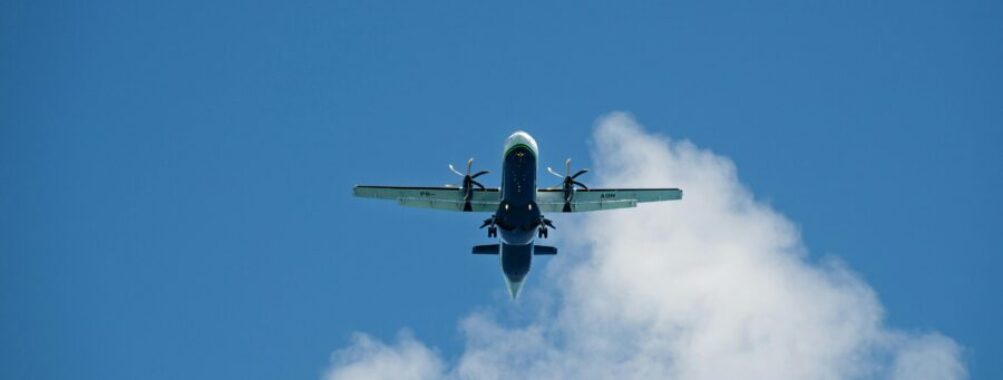
Why Is There a Hole in Airplane Windows? The Surprising Safety Feature Explained in 2025
Ever noticed that tiny hole in your airplane window while you’re floating above the clouds? It’s not a mistake or some weird manufacturing oversight—believe it or not, it’s there for your safety and comfort.
That little hole, called a “bleed hole,” has a big job. It regulates pressure between the window’s multiple panes and keeps fog from messing up your view.
When you’re flying way up high, the pressure difference between the cabin and the outside is massive. The bleed hole manages this by letting air flow between the panes.
Without it, windows could get stressed and crack. That’s not something you want at 35,000 feet.
Besides pressure regulation, these holes help keep condensation from forming between the panes. That way, you still get to enjoy the view of the clouds and the tiny towns far below.
It’s kind of wild how such a tiny detail makes such a difference.
Contents
- Key Takeaways
- How Airplane Windows Are Designed
- Structure of Plane Windows
- Difference Between Airplane and Aeroplane Windows
- Materials Used in Modern Windows
- Understanding the Hole in Airplane Windows
- Purpose of the Bleed Hole
- Location of the Tiny Holes
- Why Not All Windows Have Holes
- Managing Air Pressure and Altitude Differences
- Air Pressure Regulation
- Importance of the Air Gap
- Dealing with Atmospheric Pressure
- Safety Features in Window Design
- Preventing Window Failure with Fail-Safe Design
- Protecting Against Physical Stress
- Preventing Fogging and Icing
- Role of the Bleed Hole in Moisture Control
- How Fogging is Avoided
- Historical Evolution of Airplane Window Design
- Lessons from Square Windows
- Advancements in Safety Over Time
- Frequently Asked Questions
- Why do aircraft windows feature a small perforation?
- What purpose does the tiny hole in airplane windows serve?
- How does the presence of a hole in the window affect cabin pressure and passenger safety?
- Can you explain the engineering behind airplane window construction?
- What role does the small hole in the airplane window play in maintaining structural integrity?
- Is there a specific term used to refer to the little hole found in aircraft windows?
- More Travel Guides
Key Takeaways
- The small hole equalizes pressure between window panes so the glass doesn’t get overstressed during altitude changes.
- Bleed holes let air flow and stop the windows from fogging up, so you can actually see outside.
- This feature has evolved a lot over time and shows just how much thought goes into modern aircraft design.
How Airplane Windows Are Designed
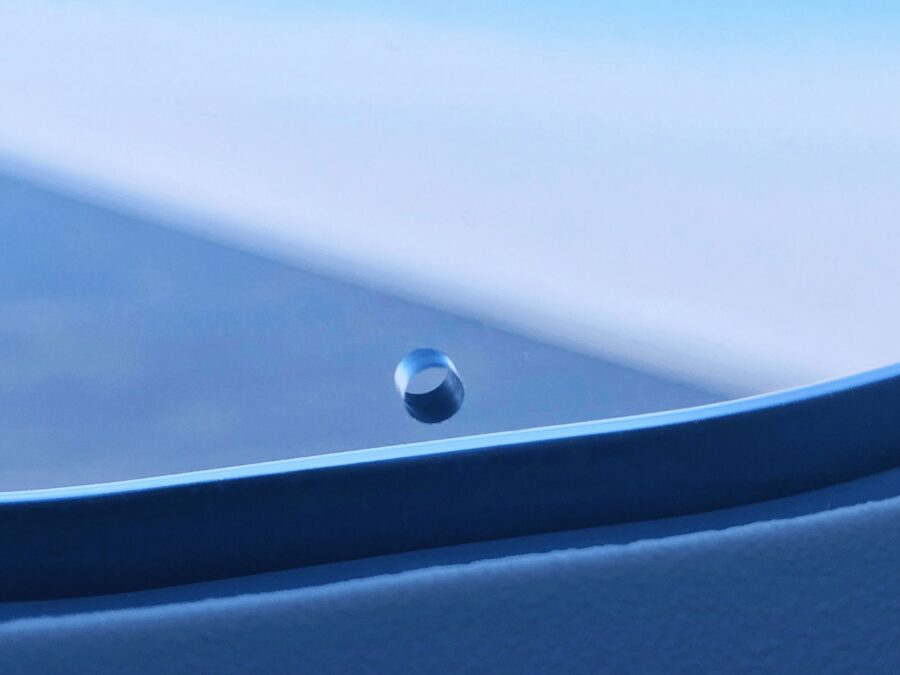
Airplane windows aren’t just about giving you a view—they’re little engineering marvels. Safety and comfort are top priorities.
They have to handle crazy pressure differences and still let you see the sky.
Structure of Plane Windows
You might think airplane windows are like the ones at home, but nope. They’re made of three separate panes, stacked together.
The outer pane takes on most of the pressure. The middle pane acts as a backup in case something goes wrong.
The innermost pane—the one you tap when you’re bored—mainly protects the other layers from scratches and fingerprints.
Between each layer, there are small air gaps. And that tiny hole you see? Yep, the “bleed hole.” It’s drilled through the middle pane.
That hole lets pressure equalize between the cabin and the air gap between the panes. Without it, windows would be at risk every time the plane climbs or descends.
It’s a simple idea, but it works brilliantly.
Difference Between Airplane and Aeroplane Windows
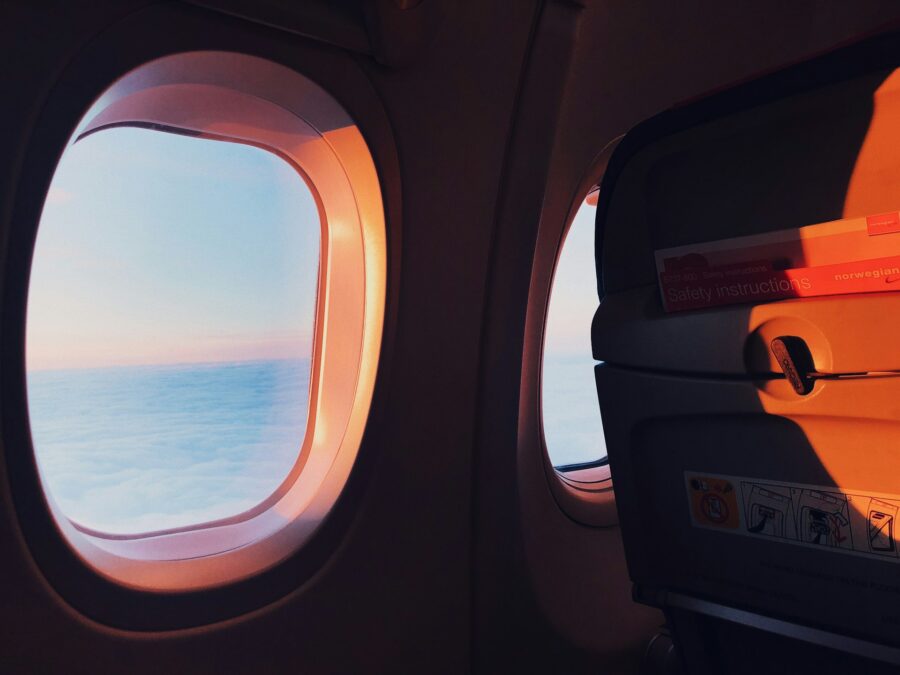
Honestly, “airplane” and “aeroplane” windows are the same thing. The difference is just spelling—Americans say “airplane” and Brits say “aeroplane.”
All commercial planes follow the same strict safety standards, no matter what you call them. They all have to pass tough tests for pressure, temperature, and impact.
What does differ is the design between aircraft models. The Boeing 787 Dreamliner, for example, has bigger windows than older planes.
Some business jets even have windows that darken electronically instead of using shades. That feels pretty futuristic.
Materials Used in Modern Windows
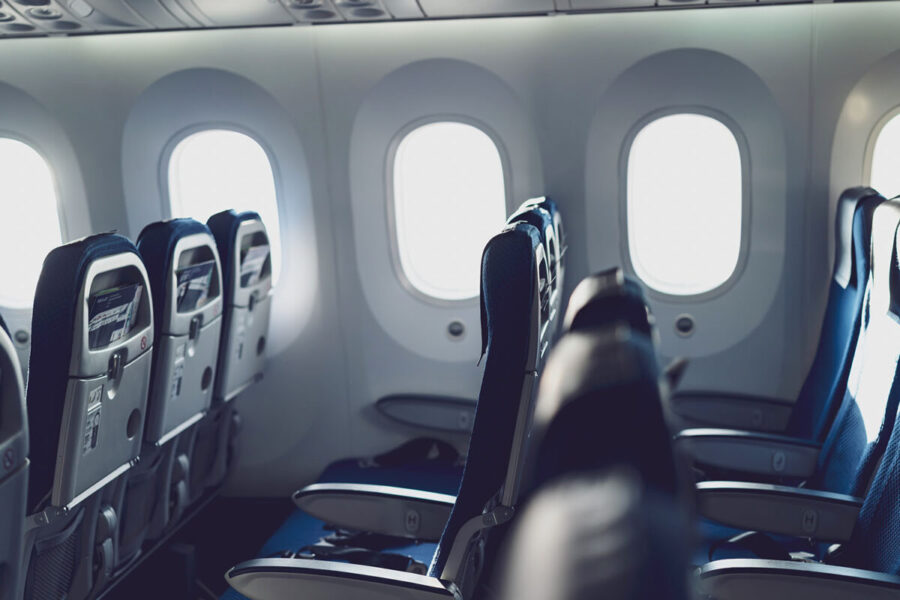
Gone are the days of simple glass panes. Modern airplane windows use acrylic—specifically polymethyl methacrylate (PMMA), better known as plexiglass.
This isn’t basic plastic. These acrylics are:
- Strong but lightweight
- Scratch and crack resistant
- Super clear with almost no distortion
- Tough enough to handle wild temperature swings
Planes like the Boeing 787 use even more advanced materials. Their windows have electrochromic gel layers sandwiched between glass-like panes, so you can adjust the tint with the push of a button.
And about that bleed hole? Engineers drill it right through the middle pane. That way, pressure is perfectly regulated, and the window stays strong.
Understanding the Hole in Airplane Windows
Have you ever really looked at that tiny hole in the window during your flight? It’s not random. That “bleed hole” is a safety feature, not a manufacturing goof.
Purpose of the Bleed Hole

The main job of the bleed hole is to regulate pressure between window panes. Each window has three layers—outer, middle, and inner.
As the plane climbs, the pressure difference gets huge. The bleed hole lets air move between the cabin and the air gap, so the outer pane takes most of the load.
If the outer pane fails (which is very rare), the middle pane (with the bleed hole) holds the pressure until you land.
The hole also stops fogging by balancing temperature and humidity between the layers. Think of how your car windows fog up sometimes—the bleed hole keeps that from happening up in the sky.
Location of the Tiny Holes
You’ll usually spot the bleed hole at the bottom of the window. It’s drilled through the middle pane—not the outer or inner ones.
It’s small, just a couple of millimeters wide. Most people never even notice it.
Engineers put it exactly where it needs to be for maximum safety and function.
Next time you fly, try to find it. It’s a neat little detail, and if you touch near it, you might feel a slight chill—especially at altitude.
Why Not All Windows Have Holes
Not every window on a plane has a bleed hole. Cockpit windows? They’re different—made of glass and heated electrically to stop icing and fog.
Emergency exit windows are another story. They’re removable and have their own safety regulations.
Some new planes use fancy pressure-equalization systems, so the design can change as technology improves.
Even among passenger windows, you’ll spot little differences in the bleed holes. That’s usually down to the manufacturer—Boeing, Airbus, and others have their own quirks.
Managing Air Pressure and Altitude Differences
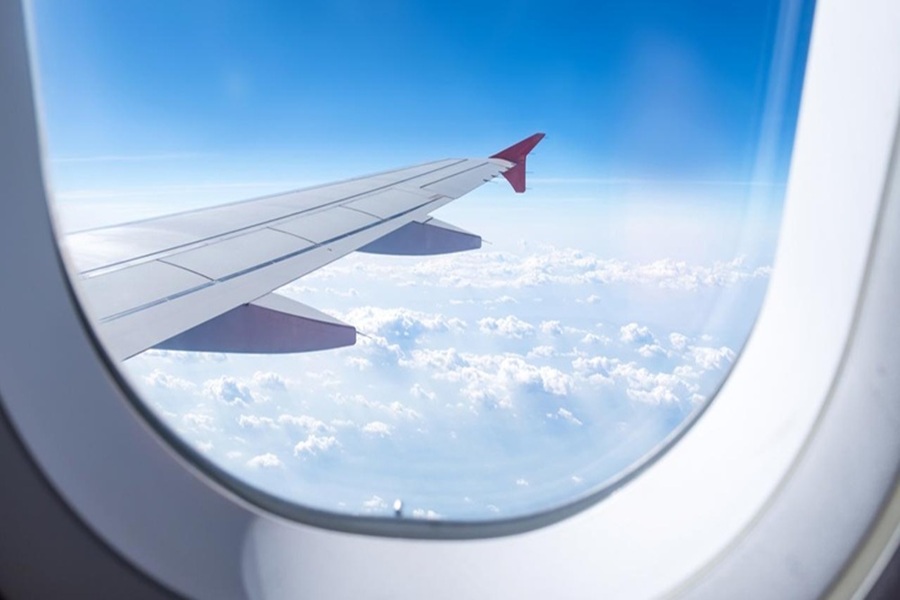
That tiny hole in your window? It’s quietly keeping you safe and comfortable while you cruise above the clouds.
It’s all about handling those wild pressure changes as the plane climbs and descends.
Air Pressure Regulation
The “bleed hole” equalizes pressure between the window panes. Most have three layers, and the hole’s in the middle one.
When you take off and climb to 33,000 feet or so, cabin pressure drops fast. If there were no bleed hole, pressure would build up dangerously between the panes.
It’s like opening a soda bottle slowly instead of popping it open after shaking it. The hole lets air move gradually, preventing stress on the window.
Importance of the Air Gap
Those air gaps between panes aren’t just empty space. They’re part of the safety system.
If the outer pane cracks (super rare, but not impossible), the middle pane with the bleed hole keeps the cabin sealed.
This redundancy makes airplane windows incredibly safe, even in tough conditions.
The air gap also insulates you from the freezing air outside. At 35,000 feet, it’s about -60°F (-51°C) out there! That gap keeps the cold at bay.
Sometimes you’ll see condensation on your window. The bleed hole helps manage that moisture, too.
Dealing with Atmospheric Pressure
As the plane climbs, outside pressure drops a lot. At sea level, it’s about 14.7 psi. At cruising altitude, it’s closer to 4.3 psi.
Your body wouldn’t handle that well, so the cabin is pressurized to about what you’d feel at 6,000-8,000 feet.
The bleed hole lets the window system handle these differences without stressing any part too much.
Without it, windows would have to be much thicker and heavier. That would make planes less efficient.
Next time you’re gazing out the window, give a little nod to that tiny hole. It’s doing more than you’d think.
Safety Features in Window Design

Airplane windows are loaded with safety features to protect you from the extremes of flight.
Preventing Window Failure with Fail-Safe Design
That little hole isn’t just a random quirk. The “bleed hole” keeps pressure balanced between the layers.
Most airplane windows have three panes. The outer one takes the brunt of the pressure. If it fails, the middle pane steps in as a backup.
The bleed hole lets cabin air flow between the inner window and the gap, so the middle pane doesn’t get overloaded at altitude.
Protecting Against Physical Stress
Ever wonder why airplane windows are rounded and not square? It’s not just for looks.
Square windows create stress points in the corners. Early jets with square windows had some nasty accidents because of this.
Round or oval shapes spread out the stress, keeping things safer.
The acrylic used for windows is crazy tough. It resists scratches, tiny cracks, and can handle huge pressure swings.
Each pane has its own job, from dealing with pressure changes to taking the hit if a bird strikes. It’s a layered approach to safety.
Preventing Fogging and Icing
The bleed hole isn’t just about pressure. It also keeps your view clear by managing moisture and stopping ice from forming.
Role of the Bleed Hole in Moisture Control
Think about your bathroom mirror after a shower—it fogs up, right? Airplane windows could do the same without the bleed hole.
The hole creates an air passage between panes, helping with moisture control.
When warm cabin air hits the freezing outer window, condensation wants to form. The bleed hole lets dry air circulate, stopping moisture from getting trapped.
Without it, you’d be peering through foggy windows the whole flight. The hole acts like a tiny vent, moving air and keeping things clear.
How Fogging is Avoided
The window’s multi-pane design works with the bleed hole to keep your view crisp.
The innermost pane has the bleed hole, letting cabin air flow into the gap. This forms a buffer zone, stepping the temperature down gradually instead of all at once.
That reduces condensation and stops ice from forming, even when it’s -50°F outside.
Cabin air passes through the hole, circulating between the panes and whisking away moisture before it can settle.
So, next time you fly, check out that little hole. It’s a small detail, but it keeps your window view open.
Historical Evolution of Airplane Window Design
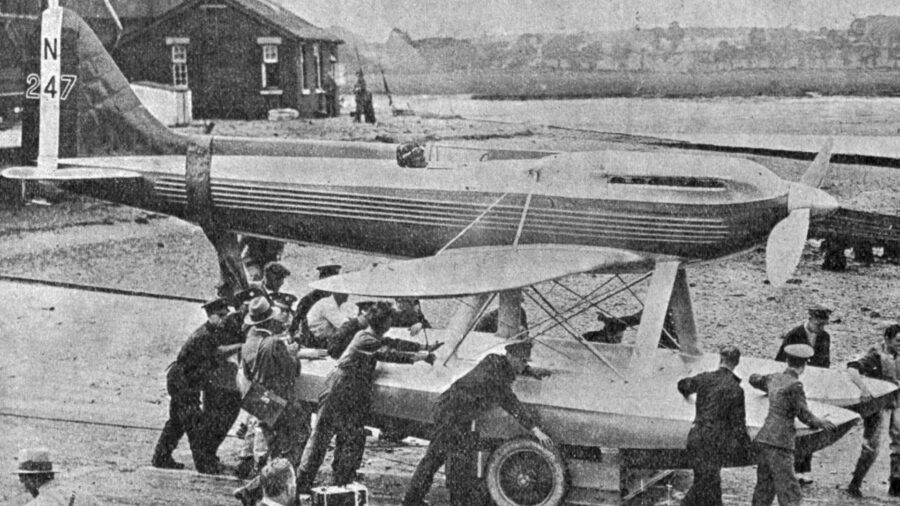
Airplane windows have changed a lot since the early days of commercial flight.
Engineers learned some hard lessons about pressure and safety, and that’s how we ended up with the designs—and those tiny holes—we see today.
Lessons from Square Windows
The story of airplane window design has a tragic twist that changed everything. Back in the 1950s, the de Havilland Comet—heralded as the world’s first commercial jetliner—came out with square windows.
On paper, square windows made sense; they were just easier to manufacture.
But then, three Comets crashed in 1954, and the aviation world reeled. Investigators discovered that those sharp corners on the square windows had become stress magnets.
At high altitudes, the pressure difference is no joke, and those corners focused all that stress, leading to metal fatigue.
Engineers realized that rounded corners could spread out the stress more evenly. That’s how we ended up with the familiar oval or rounded rectangle windows on planes today.
Advancements in Safety Over Time
Window safety has come a long way since then. These days, airplane windows usually have three panes: an outer one, a middle one, and the inner one you can actually touch.
See that tiny hole in the window? It’s called a “bleed hole” or “breather hole,” and it’s not there by accident.
As planes started flying higher, engineers added that hole to equalize pressure between the cabin and the space between the panes. The idea is to make sure the outer pane takes most of the pressure.
If the outer pane ever gives out, the middle pane still holds the cabin pressure. The inner pane just keeps passengers from poking or scratching the other layers.
Window materials have changed a lot, too. Early models used acrylic plastic, but now we’ve got stronger, more temperature-resistant stuff that can handle crazy conditions and block UV rays.
Frequently Asked Questions
Those little holes in airplane windows? They’re not just quirks of design—they actually do something important. People ask about them all the time, so let’s dig into what’s going on.
Why do aircraft windows feature a small perforation?
Aircraft windows have those small holes to balance the air pressure between layers. These “bleed holes” keep the pressure even between the cabin and the space inside the window assembly.
Without them, the pressure could get weird and cause real problems during flight.
When a plane climbs, the pressure shifts fast. The bleed hole smooths out those changes.
What purpose does the tiny hole in airplane windows serve?
The hole’s main job is pressure regulation. As your flight rises to 30,000 feet or more, the hole lets cabin air move into the space between the panes.
This setup keeps the outer pane from getting overloaded by all that pressure. It also helps get rid of moisture that might fog up your view.
How does the presence of a hole in the window affect cabin pressure and passenger safety?
The hole actually makes things safer. It lets air move in a controlled way between the window layers, so pressure doesn’t build up and threaten the structure.
If the outer pane breaks, the middle one still keeps the cabin sealed. That little hole is a smart safety feature that’s there to protect everyone.
Can you explain the engineering behind airplane window construction?
Modern airplane windows usually have three layers: outer, middle, and inner (sometimes called the scratch pane). The outer one handles most of the pressure from the outside air.
The middle pane acts as a backup. The inner pane just keeps people from messing with the other layers.
You’ll usually find the bleed hole drilled in the middle pane, which lets air move between the panes as the cabin pressure changes.
What role does the small hole in the airplane window play in maintaining structural integrity?
That hole helps spread out the air pressure across the window. By doing this, it stops stress from piling up in one spot, which could lead to cracks.
It also lets air flow so condensation doesn’t form between the panes. If moisture built up and froze at high altitude, that’d be a problem—so the hole quietly keeps things safe.
Is there a specific term used to refer to the little hole found in aircraft windows?
Aviation folks usually call these tiny openings “bleed holes” or sometimes “breather holes.” The names fit because these holes let air move, or “breathe,” between different pressure zones.
People in the industry stick to those terms, but passengers just call them “the little holes in airplane windows.” Honestly, next time you’re on a flight, why not drop this tidbit? You might just impress someone.



